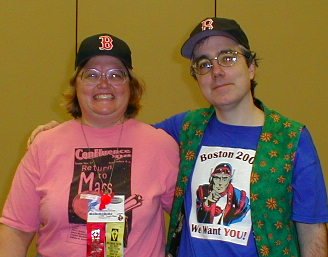Wine for the Confused
Cleese has a very no-nonsense, anti-snob approach. He emphasizes that it’s all a matter of taste. It doesn’t matter if some wine critic thinks a wine is great. If you don’t like it, it’s not good for you. On the other hand, he also suggests not being prejudiced and being willing to try new things – or even styles of wine which you are sure you weren’t all that fond of. In one of the extras, he makes the point that he thought he wasn’t a Syrah fan, until someone urged him to try a particular one, which he then found had many of the qualities that, for him, Syrah often lacked.
Cleese lives in the
During one segment he takes six wines, ranging in price from $5 to $200, all hidden in paper bags and has his guests try each, then try to guess which is the $200 bottle. The guesses run the spectrum: as many guess the $5 bottle as actually guess right, backing up his “it’s all about taste” message.
In another interesting sequence, Cleese hands his guests opaque containers (the squeeze-bottle style of sports bottle) and asks them to try it. He then asks them whether it was red or white. About half guess each way. I’d have had trouble understand that part had it not been for a wine tasting Laurie and I had gone to a few weeks ago. One of the wines was a Chardonnay, but it was a very un-oaked, full-bodied chardonnay, and I can imagine, had I done a blind taste test, not being sure whether it was a hearty white or a lighter red. (I’m sure, had Cleese done his test with a Sauvignon Blanc and a Cabernet, everyone would have guessed right.)
The DVD also includes extra scenes of Cleese talking about wine and talking with wine makers. It’s available for sale from Amazon or for rental from Netflix (as is just about everything). It’s a lot of fun, and recommended to anyone interested in food and wine.


0 Comments:
Post a Comment
<< Home